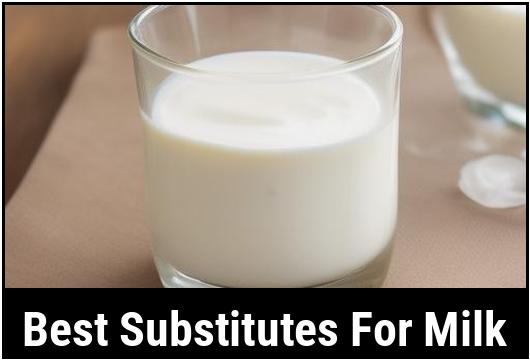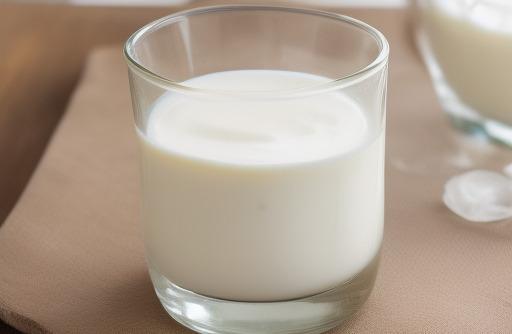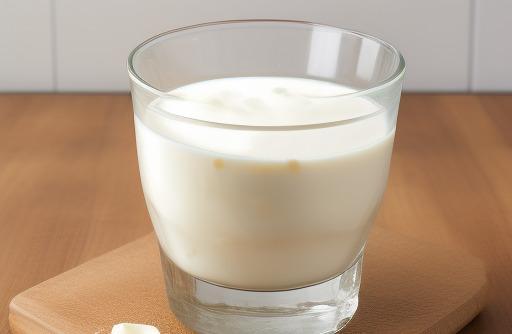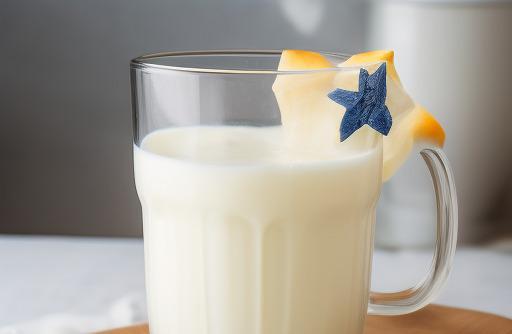- You are here:
- Home »
- Food Substitutes
- » Best Substitutes For Milk
Best Substitutes For Milk

Milk is a staple in many households, used in a variety of recipes and enjoyed as a refreshing beverage. However, there are several reasons why you may be looking for substitutes for milk. Whether you have a lactose intolerance or a dairy allergy, follow a vegan diet, or simply want to try something different, there are plenty of suitable alternatives available. In this article, we will explore the best substitutes for milk, their benefits, and provide tips for choosing the right one for your needs.
Key Takeaways
- Milk substitutes are commonly used by individuals with lactose intolerance, dairy allergies, or those following a vegan diet.
- The best substitutes for milk include plant-based options such as almond milk, soy milk, coconut milk, and oat milk.
- Each milk substitute has its own unique taste and texture, so it’s important to understand which one will work best in your recipes.
- When using milk substitutes in cooking and baking, it’s essential to understand how their properties may differ from dairy milk.
- Milk substitutes can be stored in the refrigerator for up to a week, but be sure to check individual packaging for specific instructions.
Why You Need A Substitute For Milk
There are several reasons why you might need a substitute for milk. The most common reasons include:
Lactose Intolerance
Lactose intolerance is a common condition in which individuals have difficulty digesting lactose, a sugar found in milk and other dairy products. If you experience symptoms such as bloating, gas, or diarrhea after consuming milk, you may be lactose intolerant. In this case, substituting milk with lactose-free or plant-based alternatives can help avoid discomfort.
Dairy Allergies
Some individuals are allergic to the proteins found in cow’s milk. This allergy can manifest with symptoms ranging from mild to severe, including hives, digestive issues, or even anaphylaxis. Switching to non-dairy milk substitutes is necessary for those with dairy allergies.
Vegan Or Plant-Based Diet
Many people choose to follow a vegan or plant-based diet for ethical, environmental, or health reasons. Since vegan diets exclude all animal products, including dairy, finding suitable alternatives to milk is essential.
Dietary Preferences
Perhaps you’re just looking to shake things up in the kitchen or explore new flavors. Trying different milk substitutes can add variety to your culinary adventures and introduce you to new and interesting ingredients.
Types Of Substitutes For Milk

When it comes to milk substitutes, there is a wide range of options available. Each alternative has its own unique taste, texture, and nutritional profile. Here are a few popular types of milk substitutes:
Almond Milk
Almond milk is made by blending almonds with water and then straining the mixture to remove solids. It has a creamy texture and a subtle, nutty flavor. Almond milk is naturally lactose-free, low in calories, and a good source of vitamin E. It is also rich in several minerals, including calcium, magnesium, and potassium, making it an excellent option for those seeking a plant-based milk substitute.
Soy Milk
Soy milk is one of the most widely used milk substitutes. It is made by soaking, grinding, and boiling soybeans and then straining the liquid. Soy milk has a mild, creamy flavor and a slightly thicker consistency compared to almond milk. It is an excellent source of protein, calcium, and vitamin D. Soy milk also contains beneficial compounds called isoflavones, which have been studied for their potential health benefits.
Coconut Milk
Coconut milk is derived from the flesh of mature coconuts. It has a rich and creamy texture with a subtle coconut flavor. Coconut milk is often used in Asian and tropical cuisines, adding a unique taste to curries, desserts, and smoothies. While it is higher in calories and saturated fat compared to other milk substitutes, it is a good source of medium-chain triglycerides (MCTs) and contains antioxidants.
Oat Milk
Oat milk is made by soaking, blending, and straining oats with water. It has a smooth and creamy texture with a slightly sweet flavor. Oat milk is often preferred for its versatility and ability to complement both sweet and savory recipes. It is naturally cholesterol-free, low in saturated fat, and a good source of fiber. Oat milk also contains beta-glucans, which have been shown to have heart health benefits.
These are just a few examples of milk substitutes, but there are many other options available, such as rice milk, hemp milk, and pea milk. Each alternative offers its own unique taste and texture, so don’t be afraid to explore different options to find your preferred substitute.
Best Substitutes For Milk

Now that we’ve explored the different types of milk substitutes, it’s time to determine which ones are considered the best. The term "best" can differ depending on one’s personal preferences, dietary needs, and the intended use of the substitute. However, based on popularity, versatility, and nutritional benefits, the following substitutes are widely regarded as some of the best options:
Almond Milk
Almond milk is an excellent substitute for milk due to its creamy texture and mild, nutty taste. It works well in both sweet and savory recipes and can be enjoyed as a standalone beverage. Almond milk is a great source of vitamin E and minerals like calcium and potassium. Additionally, it is relatively low in calories compared to dairy milk.
Soy Milk
Soy milk is a popular choice for those who desire a milk substitute with a similar texture to dairy milk. It has a slightly thicker consistency compared to other plant-based milks, making it a great option for adding to coffee, tea, or cereal. Soy milk is also high in protein, calcium, and vitamin D, making it a valuable nutritional addition to a vegan or plant-based diet.
Coconut Milk
Coconut milk is a rich and creamy substitute that adds a unique tropical flavor to any dish. It is a fantastic option for both sweet and savory recipes, particularly in curries, smoothies, and desserts. While coconut milk is higher in calories and fat compared to other milk alternatives, it offers the added benefit of MCTs and antioxidants.
Oat Milk
Oat milk has gained popularity in recent years due to its smooth, creamy texture and slightly sweet flavor. It works well in a variety of recipes including lattes, baked goods, and creamy soups. Oat milk is a good source of fiber and beta-glucans, making it a heart-healthy choice.
It’s important to note that taste preferences vary, so what may be the best milk substitute for one person may not be the preferred choice for another. It may take some experimenting to find the substitute that suits your personal taste and dietary needs. Remember to read the ingredient labels and choose unsweetened versions when possible to avoid unnecessary added sugars.
Pro tip: When selecting plant-based milk substitutes, opt for fortified versions. Fortified milks contain added vitamins and minerals, such as vitamin D and calcium, that are essential for optimal nutrition. Check the labels to ensure you’re choosing a variety with added fortification.
Choosing The Right Substitute For Milk

Choosing the right milk substitute depends on several factors, including the recipe you’re making, personal taste preferences, and dietary needs. Here are some considerations to keep in mind when selecting a milk substitute:
Flavor
Consider the flavor profile of the substitute and how it complements the dish you are preparing. If you prefer a nutty taste, almond milk may be the best choice. If you enjoy a creamy and slightly sweet flavor, oat milk might be more suitable. Experiment with different flavors to find the one that enhances your recipe.
Texture
The texture of the milk substitute is crucial, especially when using it in recipes that require thickness and consistency. Some substitutes, like soy milk, have a slightly thicker texture that can mimic the creaminess of dairy milk in recipes like mashed potatoes or creamy sauces. Consider the texture you desire when selecting a substitute.
Allergens And Dietary Restrictions
If you have allergies or dietary restrictions, it’s important to choose a milk substitute that aligns with your needs. For example, almond milk or oat milk may be a suitable option for those with nut allergies, whereas soy milk and coconut milk are not. Reading labels and being aware of cross-contamination risks can help you make an informed decision.
Nutrition
While milk substitutes can offer nutritional benefits, they may not provide the same amount of nutrients as dairy milk. When selecting a substitute, consider the vitamins, minerals, and macronutrient content. Choose fortified options for added nutritional value and check the sugar content, particularly if you are watching your sugar intake.
Keep in mind that experimentation and personal taste preferences play a significant role in finding the right milk substitute. Don’t be afraid to try different options and adjust according to your needs and preferences.
Cooking With Substitutes For Milk

Cooking with milk substitutes requires a slight adjustment to ensure that the taste, texture, and consistency of your recipes remain desirable. Here are a few tips for cooking with milk substitutes:
Baking
In baking, milk substitutes can generally be used as a one-to-one replacement for dairy milk. However, due to the varying levels of sweetness and moisture in different substitutes, adjustments may be necessary. For example, if using a sweetened milk substitute, you may need to reduce the added sugar in the recipe. If using a thicker substitute like soy milk, you might need to increase the liquid content slightly.
Sauces And Soups
Milk substitutes can be easily incorporated into sauces and soups. They can provide a creamy texture and enhance the flavor of the dish. When adding a milk substitute to a hot sauce, it’s best to do so gradually while whisking continuously to prevent any curdling or separation.
Coffee And Tea
Some milk substitutes may curdle when added to hot beverages like coffee or tea due to their different pH levels. To prevent curdling, try warming the milk substitute before adding it to the hot beverage. Alternatively, choose a milk substitute that specifically states it is suitable for coffee or tea.
Smoothies And Shakes
Milk substitutes work exceptionally well in smoothies and shakes, adding creaminess and flavor. Experiment with different milk substitutes to find the one that best complements the other ingredients in your smoothie or shake recipes.
While milk substitutes can be used in a wide variety of recipes, it may take a bit of trial and error to find the perfect balance. Be open to experimentation and be prepared to make small adjustments along the way.
Recipes Using Substitutes For Milk

Now that you’re familiar with the best substitutes for milk and how to cook with them, let’s explore some delicious recipes that showcase these alternatives:
1. Creamy Vegan Pasta Alfredo
- 2 cups cooked pasta of your choice
- 1 cup almond milk
- 1/4 cup nutritional yeast
- 2 cloves garlic, minced
- 2 tablespoons olive oil
- 1 tablespoon lemon juice
- Salt and pepper to taste
- In a small saucepan, heat the olive oil over medium heat.
- Add the minced garlic and sauté until golden.
- Add almond milk, nutritional yeast, lemon juice, salt, and pepper. Stir well to combine.
- Cook for 5 minutes, stirring occasionally, until the sauce thickens slightly.
- Pour the sauce over cooked pasta and toss to coat evenly.
- Serve hot and garnish with fresh herbs or vegan Parmesan cheese.
2. Vegan Chocolate Chia Pudding
- 1/4 cup chia seeds
- 1 cup oat milk
- 2 tablespoons unsweetened cocoa powder
- 2 tablespoons maple syrup
- 1/2 teaspoon vanilla extract
- In a bowl, whisk together oat milk, unsweetened cocoa powder, maple syrup, and vanilla extract until well combined.
- Add chia seeds and stir to coat the seeds with the liquid mixture.
- Let the mixture sit for 5 minutes, then stir again to prevent clumping.
- Cover the bowl and refrigerate for at least 4 hours or overnight.
- Serve chilled and top with your favorite fruits or nuts.
3. Vegan Coconut Curry
- 1 tablespoon coconut oil
- 1 onion, diced
- 3 cloves garlic, minced
- 1 tablespoon grated ginger
- 1 can coconut milk
- 1 cup vegetable broth
- 2 cups mixed vegetables (broccoli, bell peppers, carrots, etc.)
- 2 tablespoons curry powder
- Salt to taste
- In a large pan, heat coconut oil over medium heat.
- Add diced onion, minced garlic, and grated ginger. Sauté until fragrant and golden.
- Add curry powder and stir to coat the onions and garlic.
- Pour in coconut milk and vegetable broth. Stir well to combine.
- Add the mixed vegetables and simmer for about 10 minutes until the vegetables are tender.
- Season with salt to taste.
- Serve the curry over steamed rice or with naan bread.
These are just a few examples of the many delicious recipes you can create using milk substitutes. Get adventurous in the kitchen and adapt your favorite recipes to include the milk substitute that suits your taste and dietary needs.
Storage And Shelf Life Of Substitutes

To make the most out of your milk substitutes, it’s important to understand how to store them properly for optimal freshness. While storage instructions may vary by brand, here are some general guidelines:
- Unopened milk substitutes can typically be stored at room temperature until the expiration date printed on the packaging.
- Once opened, milk substitutes should be refrigerated and used within 7 to 10 days.
- Always check the individual packaging for specific storage instructions, especially for homemade or freshly made substitutes.
- Some milk substitutes may separate or curdle when refrigerated. Give the container a gentle shake or stir before using to restore a consistent texture.
Remember to always check the expiration date and discard any milk substitutes that have passed their prime.
Conclusion
Whether you are lactose intolerant, have a dairy allergy, follow a vegan diet, or simply want to try something new, there is a wide range of milk substitutes available to suit your needs. From almond milk to oat milk, each substitute offers its own unique taste, texture, and nutritional benefits. Experiment with different options and don’t be afraid to adapt your favorite recipes to include these substitutes. With a little creativity and exploration, you can enjoy all the benefits of milk without any of the drawbacks.
FAQS
What Are The Best Substitutes For Milk?
There are several alternatives to dairy milk that are gaining popularity due to lactose intolerance issues, ethical concerns, and personal health preferences. Here are five top substitutes for milk:
- Soy Milk – Made from soybeans, a good source of protein, and fortified with calcium and vitamins A and D.
- Almond Milk – Almonds are low in saturated fat, high in vitamin E, and rich in other nutrients like fiber, magnesium, and potassium.
- Coconut Milk – Rich and creamy, coconut milk contains medium-chain triglycerides (MCTs) that provide quick energy and boost metabolism.
- Oat Milk – Oats are naturally high in fiber, beta-glucans, and vitamin B6, which makes oat milk a great choice for heart health.
- Rice Milk – A great option for people with nut allergies, rice milk is low in calories, fat, and protein but can be fortified with calcium and vitamins.
Are These Substitutes As Healthy As Dairy Milk?
Each alternative has its benefits and drawbacks, but they can be nutritionally balanced if fortified with essential vitamins and minerals. For example, soy milk is high in protein, but some research suggests that soy may affect hormone levels, so moderation is always recommended. Almond milk is low in calories, but it may not provide enough protein or calcium. Coconut milk is naturally rich in healthy fats, but it’s also high in calories, so it’s best consumed in moderation. Oat milk is low in fat and calories, but it’s also high in carbs and may not be the best option for people on a low-carb diet. Rice milk is low in allergens, but it’s also low in protein and can be high in sugar if not in moderation.
Can These Substitutes Be Used In Baking?
Yes, most dairy-free milks can be used in baking as a replacement for regular milk. However, some substitutes may alter the taste and texture of baked goods. For example, soy milk has a slightly nutty flavor that might not work in all recipes. Almond milk may make baked goods denser, and coconut milk can add a coconut flavor to the final product. Oat milk should work well in most recipes, but it may not have enough fat to make a creamy sauce or frosting. Rice milk is thinner than other substitutes and may not provide enough structure to baked goods.
Can These Substitutes Be Used In Coffee Or Tea?
Yes, most dairy-free milks can be used in coffee or tea, but it’s best to choose one that complements the flavor of your beverage. For example, soy milk works well in latte because it froths up nicely and adds a creamy texture. Almond milk can be used in coffee if you like the nutty flavor and will complement the coffee taste. Coconut milk can be used in tea for a tropical flavor, and oat milk is more neutral and adds a nutty, slightly sweet taste. Rice milk can also work in coffee or tea, but it’s not as creamy as other options.
What Are The Environmental Benefits Of Using Dairy-free Milk Alternatives?
Dairy farming has a severe impact on the environment, as cows require food, water, and land to produce milk. This often leads to deforestation, water pollution, greenhouse gas emissions, and other ecological issues. In contrast, plant-based milk alternatives are generally more sustainable and require fewer resources to produce. For example, almond milk requires around 930 liters of water per liter, whereas dairy milk requires around 1,020 liters. Furthermore, soy milk has a lower carbon footprint than dairy milk, resulting in a smaller ecological impact.
Sources
About the Author Jenny
I'm Jenny, a housewife with an unwavering passion for food. My culinary journey began with my grandmother's kitchen, and it's now a full-fledged food blog. I've turned my love for cooking into a creative outlet, sharing recipes and stories with a global community of fellow food enthusiasts. It's proof that being a housewife can also mean pursuing your passions and savoring life's delectable moments.
